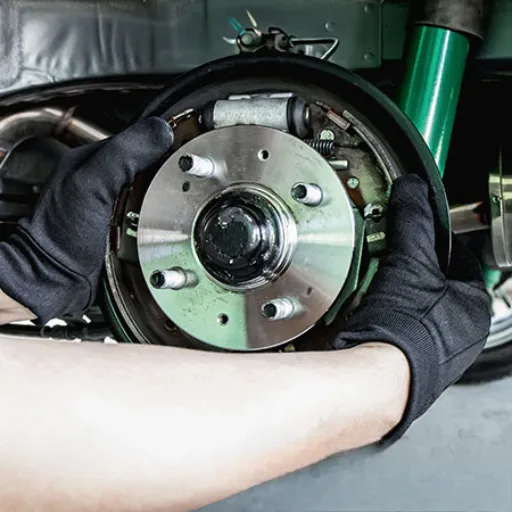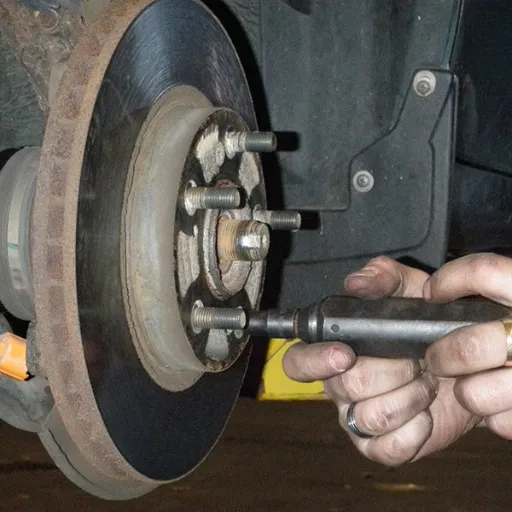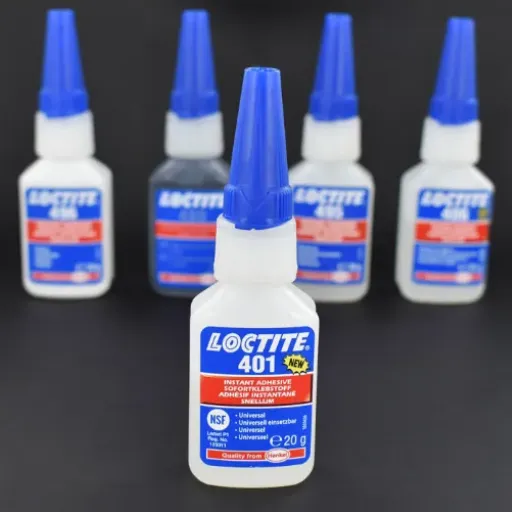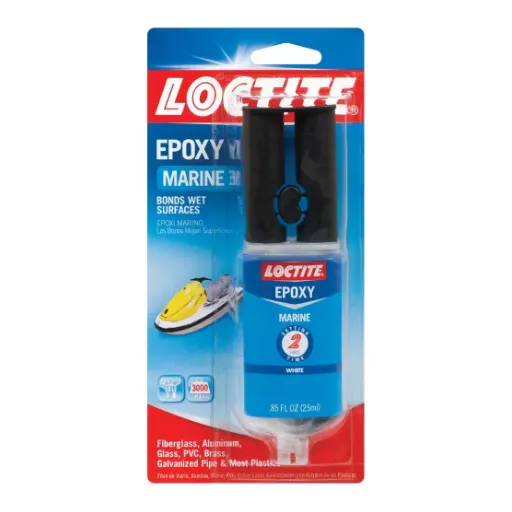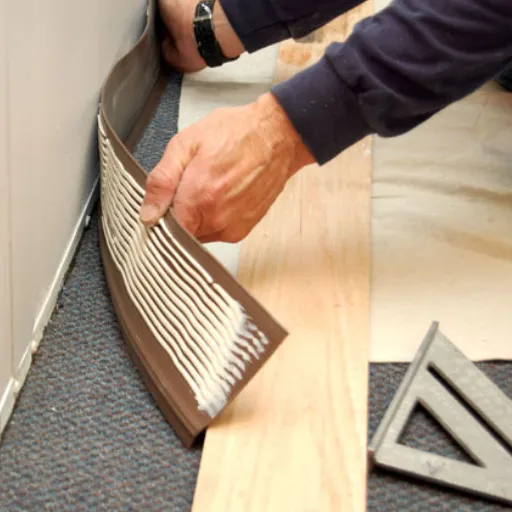When it comes to vehicle maintenance, one specific element that hardly comes to mind until something has to be done with it is the wheel bearing. This small component in the vehicle’s tires is responsible for the smooth, efficient rotation of the wheels. On the other hand, the problem with the wheel bearing is not as innocent as it seems and soon enough it becomes a high-risk problem. Yes, everyone should have an idea of the money involved, the wheel bearing cost, and what these costs depend on. With that said, the purpose of this text is to introduce you to the world of wheel bearings, comprising the meaning of wheel bearings, how to spot a bearing that is having problems, and the replacement of bearings – what are the costs like. This book is relevant not only to petrolheads but also to those who do not want to be caught off guard by unexpected repairs.
What is a Wheel Bearing?
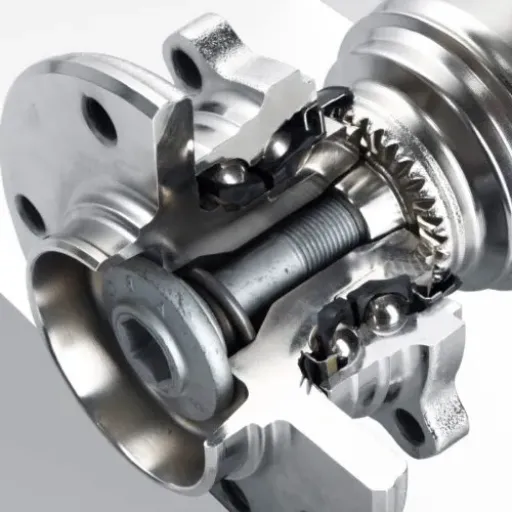
The term refers to an essential part of a car wheel’s design that allows it to rotate effortlessly without hindrance. The part is manufactured with pre-hardened steel balls or rollers placed between a metal ring. This assembly is then fitted and attached to the wheel hub. The primary role of wheel bearings is to support the vehicle and enable the wheels to rotate as the vehicle moves.
Definition and Function of Wheel Bearings
They are strategically placed, essential components of vehicles that ensure the perfect and secure functionality of the wheel. It is made up of steel balls or rollers, held together by a metal ring, & a rotatable part within which the balls or rollers are placed. The bearing is in the wheel’s central hub and carries the entire load of the vehicle as the wheel rotates from left to right and vice versa.
Furthermore, wheel bearings do not end their work in providing thrust towards the moving car. They help balance the vehicle, particularly at high speed, by minimizing friction and heat, thereby allowing the wheels to rotate. Quality ones, for instance, will withstand both the radial and axial forces exerted in a car’s motion such as going around a corner or bumps in the road. These days, most wheel bearing systems include covers to prevent foreign particles or liquids, such as water, from prematurely damaging the mechanism. The inspection of the system and its components should be conducted regularly to avoid damage, and to the extent that worn-out bearings produce not only a rattling sound but also harshness and even failure in the car’s operation. This knowledge helps maintain a vehicle longer with effective management.
Importance of Wheel Bearings for Safe Driving
Safety and productivity are two fundamental aspects of vehicle operation, which cannot be achieved without wheel bearings. They reduce friction within the wheel, allowing it to spin freely while carrying the car’s weight. Well-maintained wheel bearings significantly influence a vehicle’s balance, cornering, and straight-line performance, especially when cornering or negotiating uneven terrain.
However, this can cause an individual to experience a damaged or worn wheel bearing. This includes the wheel rim, as some will lose grip while turning, which is not very good. Otherwise, and where applicable, those sequences of actions are undesirable as they undermine the purpose of the course, which is, in this case, offering wheel alignment and safe use of tires. Maintenance efforts, such as inspections and replacements, should be applied to wheel bearings to ensure peak performance. This is because addressing wheel bearing issues earlier will help reduce repair costs and maintain the motorist’s purpose.
Types of Wheel Bearings
The main types of wheel bearings include ball bearings, roller bearings, tapered roller bearings, and precision ball bearings.
| Type | Features | Usage | Key Benefit |
|---|---|---|---|
| Ball Bearings | Spherical | Versatile | Durability |
| Roller Bearings | Cylindrical | Heavy loads | Longevity |
| Tapered Bearings | Cone-shaped | Axial loads | Stability |
| Precision Bearings | High Accuracy | Performance | Efficiency |
Signs of Worn-Out Wheel Bearings

⚠️ Warning Signs Checklist
- 🔊Strange Noises: Any grinding, humming, or roaring noise that appears to come from the wheels.
- 🔄Excessive Wheel Play: If the wheel is sufficiently loose that it wobbles when agitated.
- 🛞Irregular Tire Wear: Bearing failure can cause abnormal tire wear.
- 📳In-Car Vibrations: The steering or the car as a whole is abnormally shaky.
- 💡ABS Light Indicator: A poorly performing wheel bearing may impact ABS.
- ↔️Pulling in one direction: When driving or braking, the vehicle pulls to one side.
💰 Wheel bearing problems can be diagnosed early, rather than replacing the wheel bearing, and wheel bearings cost around $200.
Common Symptoms of a Failing Wheel Bearing
1. Grinding or Growling Noise
One of the common problems with car wheels is grinding noise, especially when driving round curves.
2. Excessive Play in the Wheel
When one attempts to move a wheel in a back-and-forth motion, and it tends to show some slackness or vibration, excessive play is present.
3. Uneven Tire Wear
This condition can be observed when the tires have some extra wear on one side than the other because of the motion of the vehicle, thanks to the failure in the wheel bearing.
4. Vibrations While Driving
These are vibrations felt through the steering wheel or from the vehicle while it is moving.
5. ABS Warning Light
A defective wheel bearing may cause the ABS sensor to fail, resulting in the system warning light illuminating.
How to Identify a Problematic Wheel Bearing
Worn wheels in the car indicate a high probability of wheel bearing failure, but further examination will be necessary. Understand the various types of noises, namely those that are either circular or knobby, and change with speed- if the noise, particularly changes with speed as in increase of speed, humming, grinding, growling…then it is safe to say there is a problem with the wheel bearing. An unstable bearing could also cause other problems like irregular tire wear and tear; hence, examine these physical symptoms too. It is advisable to check the free movement of the bearing by raising the car and moving the wheel in outward and inward motion slowly to note any noise or loss of motion of the wheel. The other way is to feel abnormal resistance or vibrations while moving, which indicates a problem with the bearing. If the Anti-lock Braking System (ABS) light on the dashboard is on, there is still hope of such suspicion. The provision of these symptoms, especially at an earlier stage of detection, shifts to mechanical attention to the vehicle before the damage worsens.
Consequences of Ignoring Wheel Bearing Issues
Several effects could result from negligence in wheel bearings on an automobile. First of all, a bad wheel bearing can wear out the tires and cause problems with car control. Uneven treadwear and possible crashes caused by instability also contribute to this factor: wheel bearing failure. As the days go by, this problem may cause damage to other parts associated with the wheels, such as the axle or suspension systems, necessitating expensive repairs. Also, if left unchecked, the problem may become very serious and the wheels might become detached while the person is trying to drive. Repairing a wheel bearing defect immediately is important because it ensures the person’s safety and prevents unnecessary losses.
🚨 Critical Warning
Ignoring wheel bearing issues can lead to wheel detachment, tire damage, axle failure, suspension system damage, and potentially catastrophic accidents. Always address bearing problems immediately to ensure safety and prevent costly repairs.
Cost to Replace Wheel Bearings
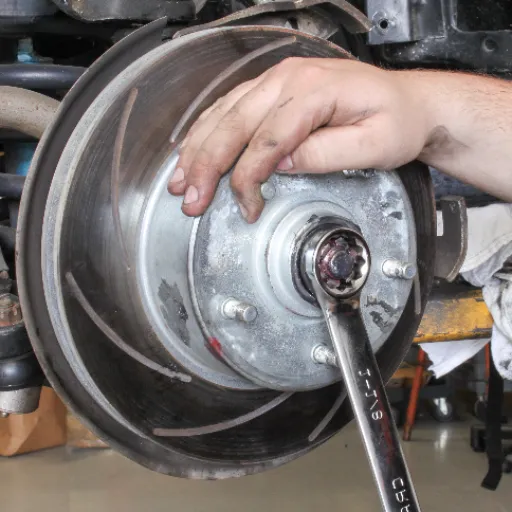
Based on the make and model of one’s car, as well as the geographical location due to labor charges, which vary by region, the wheel bearing cost would range from $150 to $500 per wheel. Luxury or special-purpose vehicles may have higher overhaul costs; however, some are designed to allow cheaper repairs. More than the noise itself, leaving broken wheel bearings unrepaired might lead to further damage and additional costs.
Factors Influencing Wheel Bearing Replacement Costs
🚗 Makers and Models
Unparalleled vehicles with flamboyant styles can incur costly wheel-bearing repairs. For instance, it is true that ‘exotic’ motorcars most often use expensive parts.
👨🔧 Labour Costs
Labour Resources differ across countries and even within the same country. Areas with too high labour operational costs account for a larger share of the bill.
⚙️ Part’s Standard
If you choose high-quality or OEM (wheel manufacturer’s) wheel bearings, the cost may increase; however, they tend to last much longer than non-OEM bearings.
🔧 Level of Damage
The cost of repair will also be high if the damage to wheel bearings extends to the axle, or if the hub assembly needs replacement.
🔍 Ease of Access to Wheel Bearings
The difficulty of reaching wheel bearings in some vehicles will affect the time and cost of repair. In some cars, the assemblies can be located and accessed with ease, whereas in others they require complex procedures.
Average Costs for Wheel Bearing Replacement
The wheel bearing replacement cost depends on factors such as the vehicle manufacturer and model, local labor rates, and whether OEM or aftermarket parts are used. As a single wheel bearing is undertaken, and on inspection, an approximation of $200 to $400 would suffice. If, on the other hand, both front and rear bearings need replacement, the price range can increase to $400-$800. In some cases, the assembly of luxury and high-performance cars is more complex and can cost almost $1,000.
Keep in mind that replacing a few wheels is mostly labor-intensive, with costs ranging from $100 to $250, depending on how deeply the bearings are embedded. On the other hand, the parts are $50-$150 for one bearing most of the time. Regular maintenance and timely solutions to wheel bearing problems will not require additional expenses for repairs to adjacent parts.
💵 Cost Breakdown Summary
- 💰 Single Wheel Bearing: $200 – $400
- 💰 Front & Rear Bearings: $400 – $800
- 💰 Luxury/Performance Vehicles: Up to $1,000
- 🔧 Labor Costs: $100 – $250
- ⚙️ Parts Cost (per bearing): $50 – $150
Comparative Costs Across Different Vehicle Models
The cost to replace wheel bearings varies across models, including sedans, SUVs, trucks, and luxury vehicles, depending on labor and parts pricing.
| Vehicle Type | Labor Cost | Parts Cost | Total Cost |
|---|---|---|---|
| Sedan | $100-$200 | $50-$150 | $150-$350 |
| SUV | $150-$250 | $75-$200 | $225-$450 |
| Truck | $200-$300 | $100-$250 | $300-$550 |
| Luxury | $250-$400 | $150-$300 | $400-$700 |
This concise table outlines the comparative costs of replacing wheel bearings by vehicle type, providing clarity for budgeting.
Labor Costs Involved in Replacing Wheel Bearings
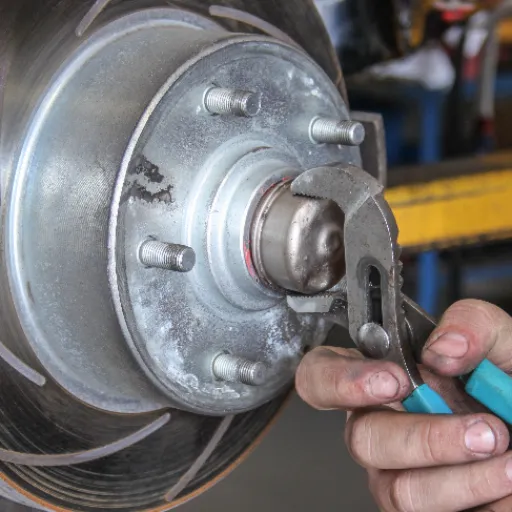
Labor costs for wheel bearing replacement depend on the job location, complexity, and vehicle type. For sedans, rates range from $100 to $200; for SUVs and trucks, from $150 to $300. Luxury brands naturally demand higher labor rates of $250 to $400. Differences explain the effort and skill required for the various vehicle types.
Typical Labor Rates for Wheel Bearing Replacement
Labor charges for wheel bearing replacement are generally based on the location and type of repair shop. Usually, they range from $70 to $150 per hour. Independent repair shops may earn a little less, while dealership service centers may charge a higher price. Depending on the complexity of the bearing replacement, the total labor time is generally 1 to 3 hours. Be sure to obtain the rates from your chosen repair facility to get an accurate cost estimate for your vehicle.
⏱️ Labor Rate Guidelines
- Hourly Rate Range: $70 – $150 per hour
- Independent Shops: Generally lower rates, more affordable
- Dealership Service Centers: Higher rates, OEM expertise
- Total Labor Time: 1 – 3 hours depending on complexity
Time Required for Wheel Bearing Replacement
The time required to replace a wheel bearing generally depends on factors such as the vehicle make and model, the condition of the parts involved, and the technician’s skill level. On average, a professional mechanic can perform this repair in 1 to 2 hours. In more difficult assemblies or rusted components, however, it may take up to 3 hours. Always get in touch with a certified technician for the most accurate estimate for your specific vehicle.
Cost Differences Between DIY and Professional Service
Wheel bearing changes can be priced widely, ranging from DIY to professional. For the DIY enthusiast, it is a boatload of spare parts to purchase. A wheel bearing costs about $50 to $200, depending on the vehicle’s make and model. If you do not have the tools, you might need to purchase a bearing press or a torque wrench, which can cost anywhere from $50 to $100.
On the other hand, the average price for professional services ranges from $200 to $400 for labor alone, with parts adding $50 to $200, depending on the mechanic’s labor rates and the complexity of the particular assembly. To decide between professional installation and DIY, consider that a professional service guarantees installation and therefore reliability; however, for those who have the disposition, tools, and can do it, there is always the DIY option. In essence, it is a matter of how much money one can spare, technical know-how, and time value.
| Approach | Parts Cost | Labor/Tools Cost | Total Estimate | Considerations |
|---|---|---|---|---|
| DIY | $50-$200 | $50-$100 (tools) | $100-$300 | Requires skills & tools |
| Professional | $50-$200 | $200-$400 | $250-$600 | Guaranteed reliability |
Tips for Reducing Wheel Bearing Replacement Costs

✅ General Maintenance
Always keep your vehicle maintained to avoid the premature wear of wheel bearings.
✅ Compare Mechanics
Shop around and get quotes from different mechanics and/or shops to get the best price.
✅ Buy Parts Yourself
Purchase the wheel bearings yourself; always aim for quality components to avoid a mechanic’s markup.
✅ Doing It Yourself
If you have the skills and tools, consider replacing your wheel bearings yourself to avoid labor costs.
Finding Affordable Replacement Parts
If you want the best cheap replacement parts, start by looking at retailers and marketplaces that specialize in automotive parts. Local stores that sell car parts and junkyards are also good cost-effective alternatives, especially if you are looking at an older car model. Always check the price and read customer reviews to ensure the quality. Also, keep in mind aftermarket parts, which tend to be cheaper than OEM parts while still offering good performance. Look for discounts, promotions, or even bulk deals to save some money.
🛒 Where to Find Affordable Parts
- Online Retailers: Jingjiang Fuji, RockAuto, AutoZone, Parts Geek
- Local Options: Auto parts stores, salvage yards, junkyards
- OEM vs Aftermarket: Aftermarket parts often cheaper with good performance
- Money-Saving Tips: Look for discounts, promotions, and bulk deals
Comparing Quotes from Different Mechanics
Comparing quotes from mechanics should begin by requesting detailed estimates from at least three reputable repair shops. Make sure you receive a quotation detailing parts, labor charges, and any other charges. Transparency helps spot discrepancies and appreciate value. Also, consider the warranty on parts and labor since this may be a way of further savings. Lastly, do your due diligence on reviews and ratings for each mechanic vis-a-vis reliability and customer satisfaction before settling for any option.
📋 Quote Comparison Checklist
- ✓ Request estimates from at least 3 repair shops
- ✓ Ensure quotes detail parts, labor, and additional charges
- ✓ Check warranty coverage on parts and labor
- ✓ Research reviews and ratings for reliability
- ✓ Look for transparent pricing and no hidden fees
Importance of Preventative Maintenance
Having preventive maintenance performed on your vehicle goes a long way toward extending its lifespan and ensuring reliable performance. If kept up on routine maintenance, they often address problems when they are minor, thereby preventing significant repair bills down the road. Searches for “car maintenance tips” and “how to prevent car breakdowns” are on the rise, indicating that more consumers are recognizing the importance of preventive care. Regularly checking oil, brakes, tires, and filters helps prevent unexpected failures and improves fuel efficiency. Staying ahead of your service schedule will not only protect your investment but also increase safety on all roads, making preventative maintenance a wise decision supported by statistics.
🔧 Preventative Maintenance Benefits
- Extends vehicle lifespan and ensures reliable performance
- Addresses minor problems before they become major repairs
- Prevents unexpected failures and breakdowns
- Improves fuel efficiency and overall vehicle performance
- Increases safety on the road and protects your investment
📚 Reference Sources
-
AutoZone: How Much Does a Wheel Bearing Replacement Cost? – Provides detailed cost ranges for front and rear wheel bearing replacements, including professional shop averages.
-
Kelley Blue Book: Wheel Bearing Replacement Prices & Cost Estimates – Offers national average costs for wheel bearing replacements and insights into variations for luxury brands.
-
Facebook Group Discussion: Cost to Fix a Wheel Bearing – Shares community insights on wheel bearing costs based on car make, model, and year.
-
Edmunds: What Are Wheel Bearings & Signs You Need to Replace – Explains what wheel bearings are and when they need replacement.
-
Don’s Auto Repair: 3 Signs You Need A Wheel Bearing Replacement – Highlights signs of wheel bearing issues and the importance of timely replacement.
Frequently Asked Questions (FAQs)
How much does wheel bearing replacement generally cost?
The average cost of replacing a wheel bearing can change between hundreds of dollars due to the vehicle’s make and model and local labor costs. Generally, you pay anywhere between $300 and $800. The price covers the parts and the labor associated with replacement. Do try to get a free, detailed estimate from a local mechanic to understand what it will cost for your particular vehicle.
What are the signs of worn-out wheel bearings?
Grinding and humming noises are signs of worn-out wheel bearings while driving, especially during left or right turns. Steering wheel vibrations might be another indicator, as can poor wheel alignment. If you feel your bearings are going down, it’s a good time to have them checked by a mechanic with the right tools.
Is it possible to change wheel bearings on your own?
Bearing replacement is an automotive repair task typically classified as DIY if the person has the tools and mechanical knowledge to do it. This procedure involves disassembling components such as the caliper, rotor, and axle nut, so if you’re not really familiar with the task, it’s best to consider getting professional help to ensure it’s done correctly and doesn’t fail prematurely.
What happens during wheel bearing replacement service?
During the process, the mechanic will disassemble the wheel hub, remove the damaged bearing, install the new bearing, and reassemble the unit. They also check for any unusual wear on other components, such as the ball joint, and see that everything is fine before mounting the wheel.
What tools are necessary for wheel bearing replacement?
You can replace wheel bearings with special equipment: a shop press, a bearing puller, and various hand tools that will come in handy for disassembly and reassembly. Having the right tools at hand will take away some of the aggravation and increase the chances of doing the work correctly.
What do front wheel-bearing replacements average?
The average cost to replace front wheel bearings can range from $300 to $800; that is the price for a standard wheel bearing. Bearing-wheel bearings at the front are usually under more stress and may need more frequent replacement, leading to higher vehicle maintenance costs.
Conclusion
Understanding wheel bearing costs and the factors that influence replacement expenses is crucial for every vehicle owner. By recognizing the early warning signs of bearing failure, comparing quotes from multiple mechanics, and maintaining your vehicle through preventative care, you can significantly reduce repair costs and ensure safe driving. Whether you choose professional service or tackle the job yourself, being informed empowers you to make the best decision for your vehicle and budget. Remember, timely maintenance today prevents costly repairs tomorrow.
🚗 Regular maintenance and early detection are your best tools for managing wheel bearing costs effectively. 🔧







